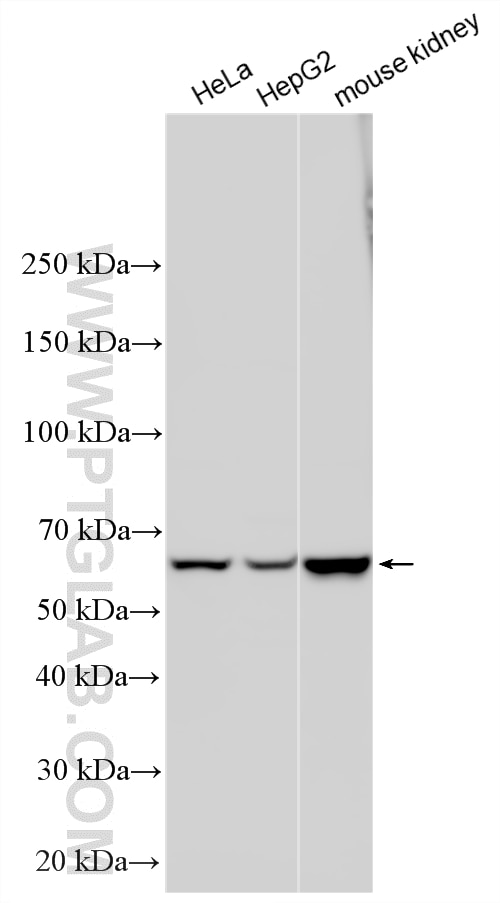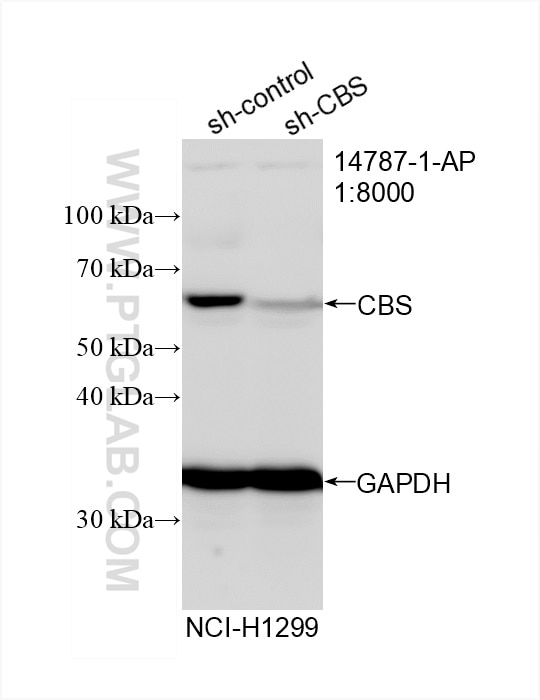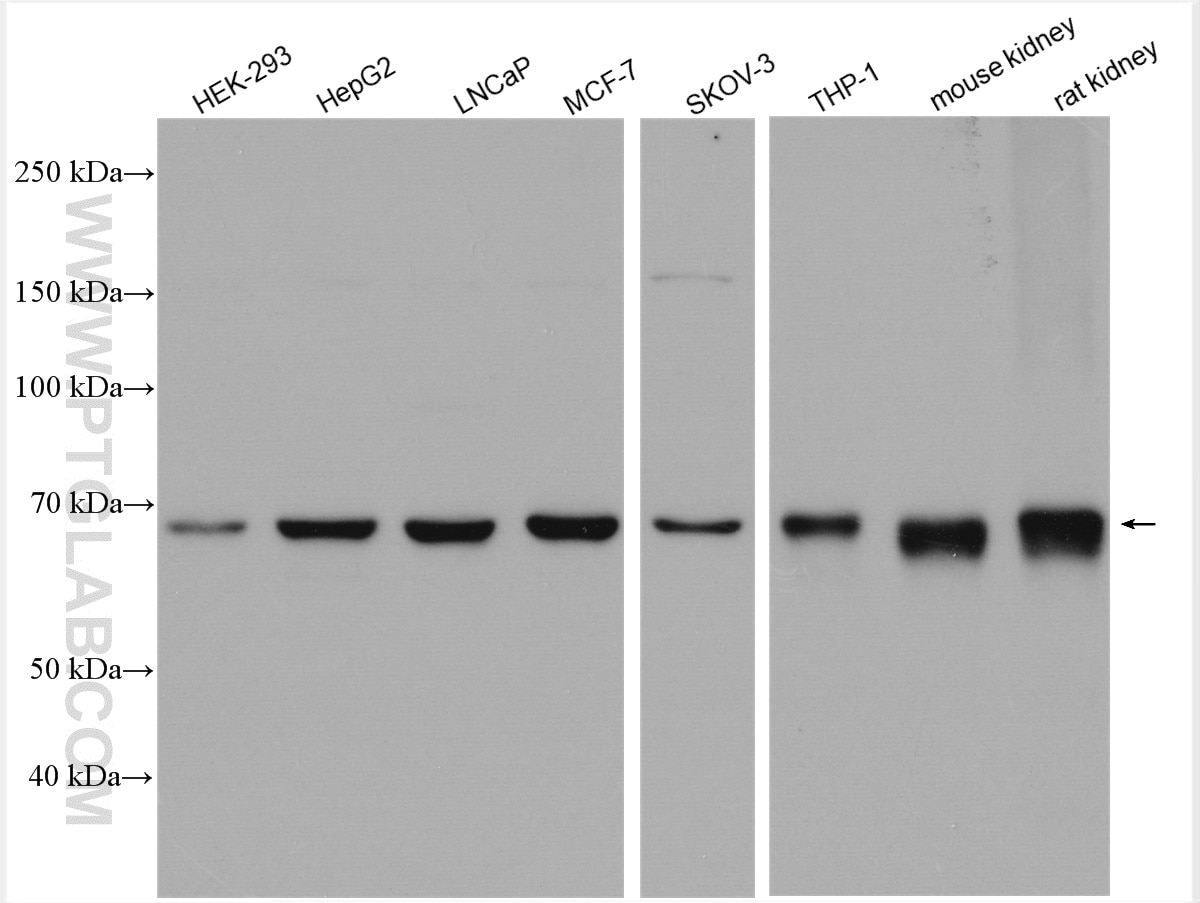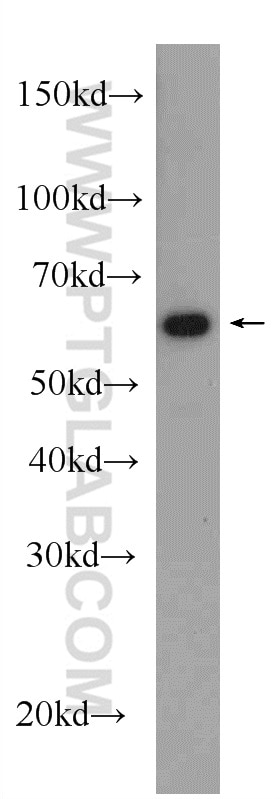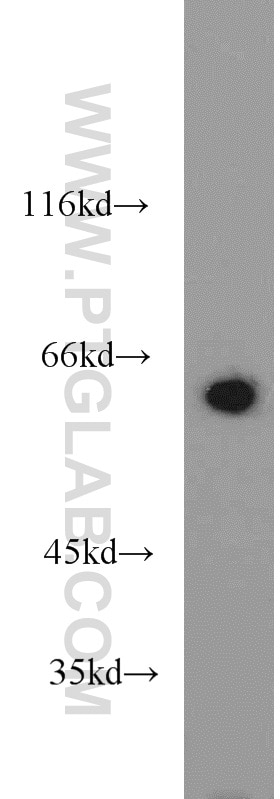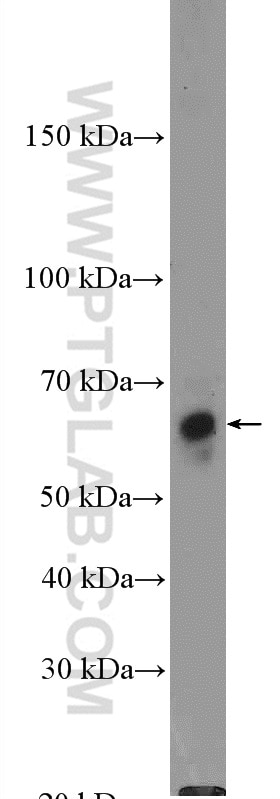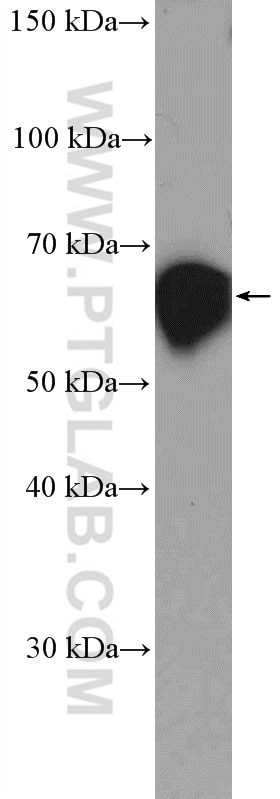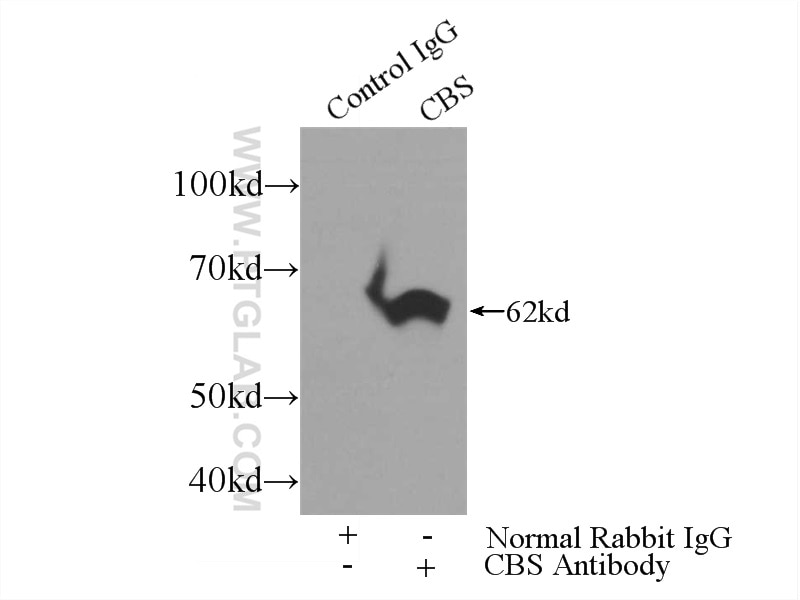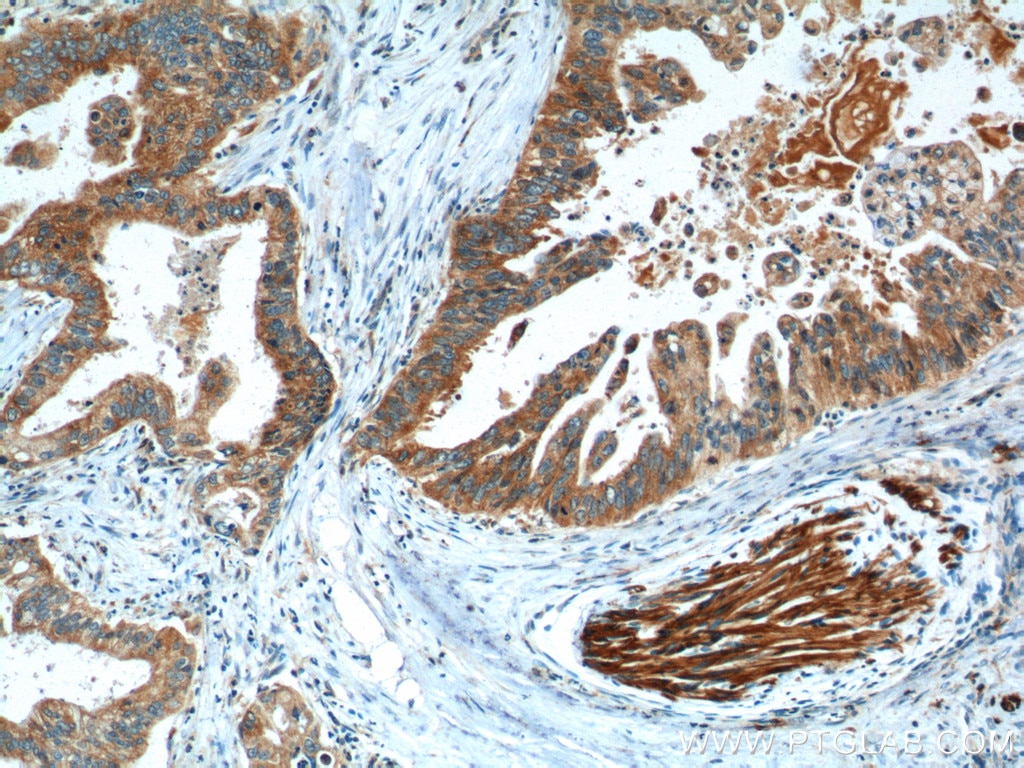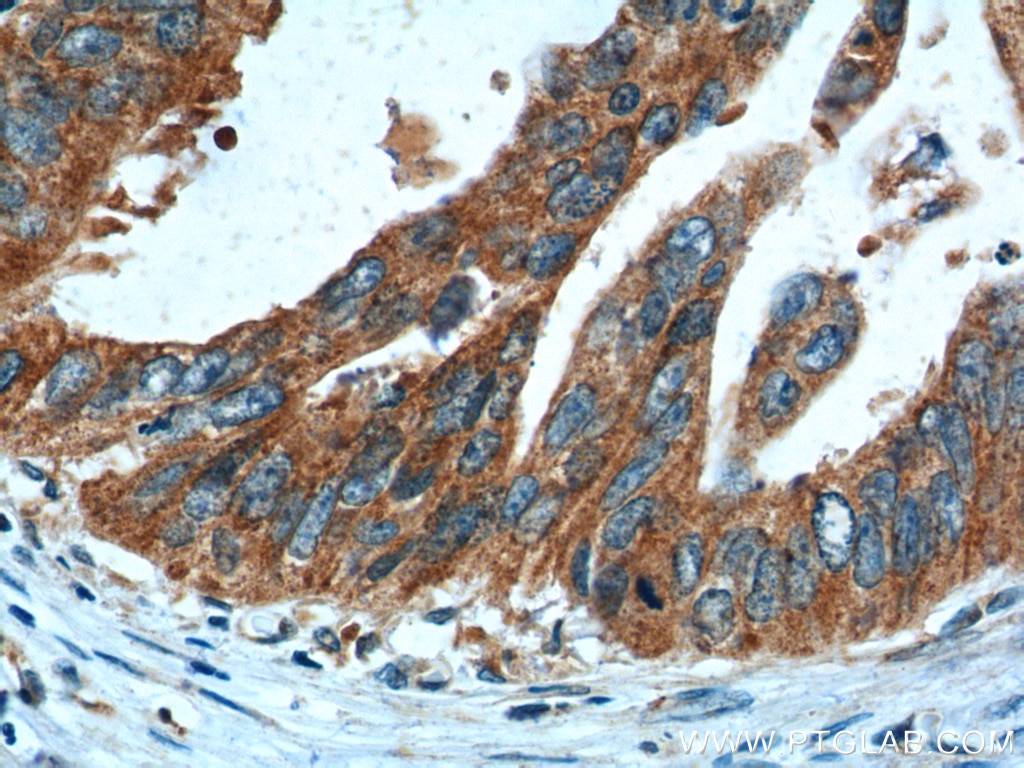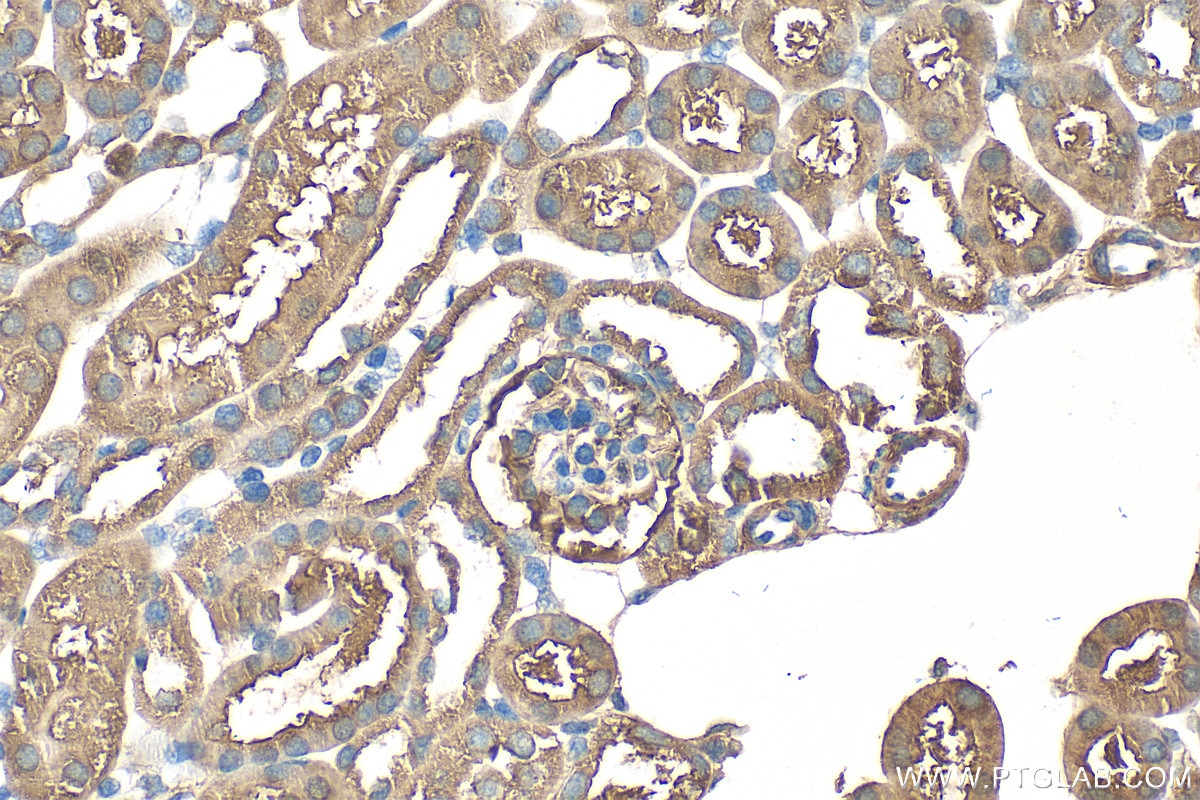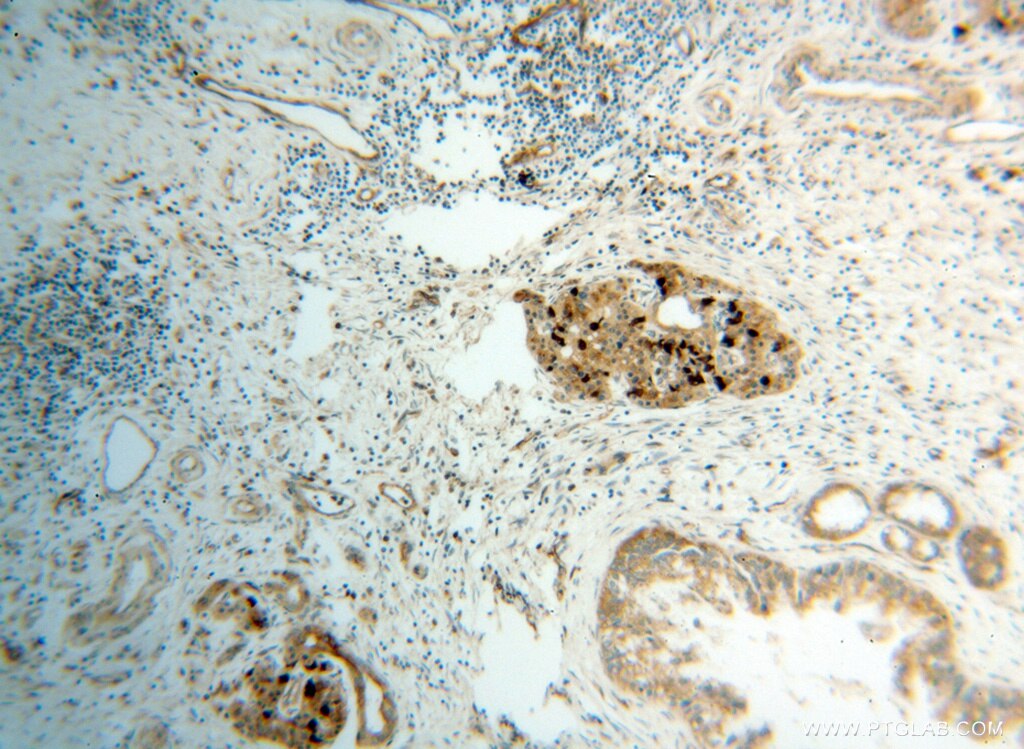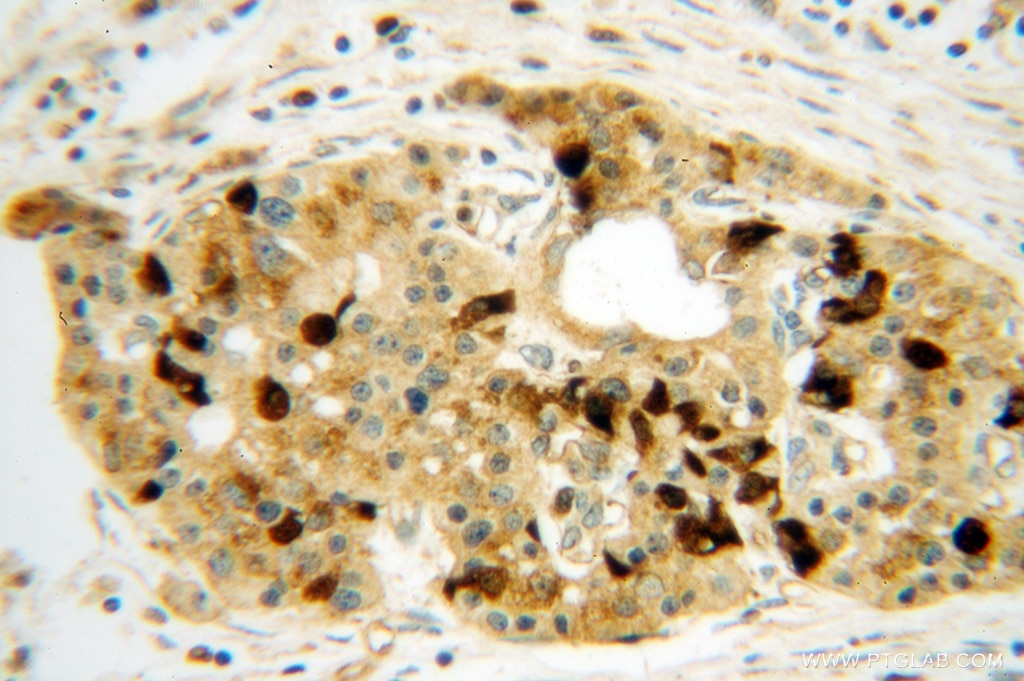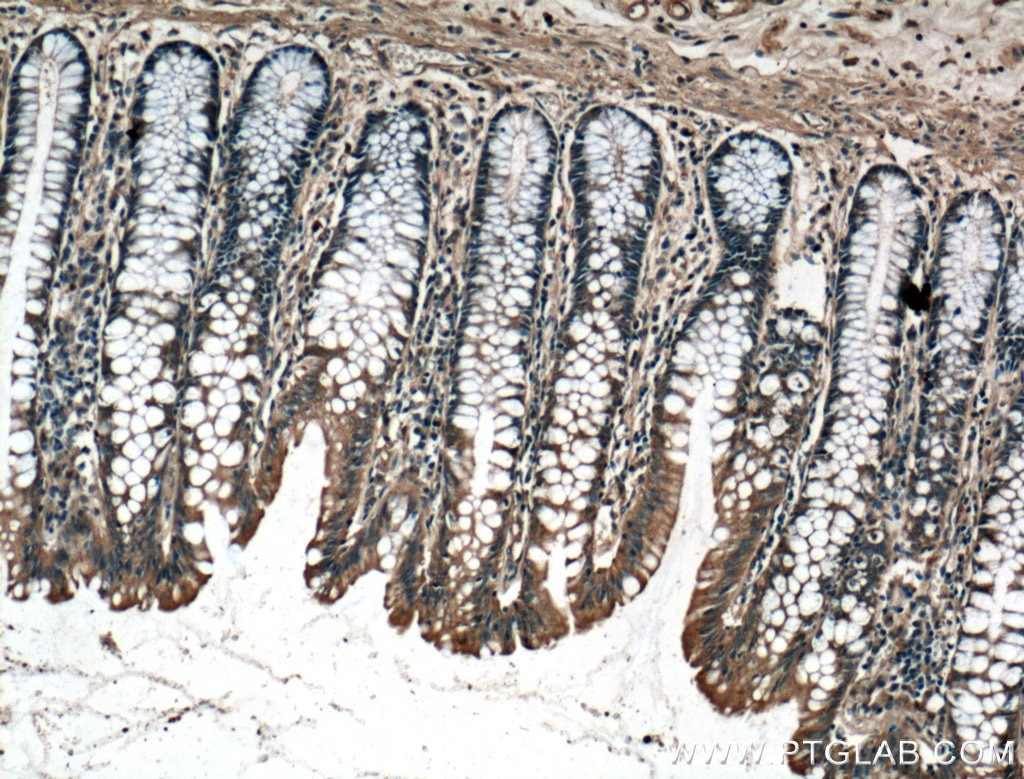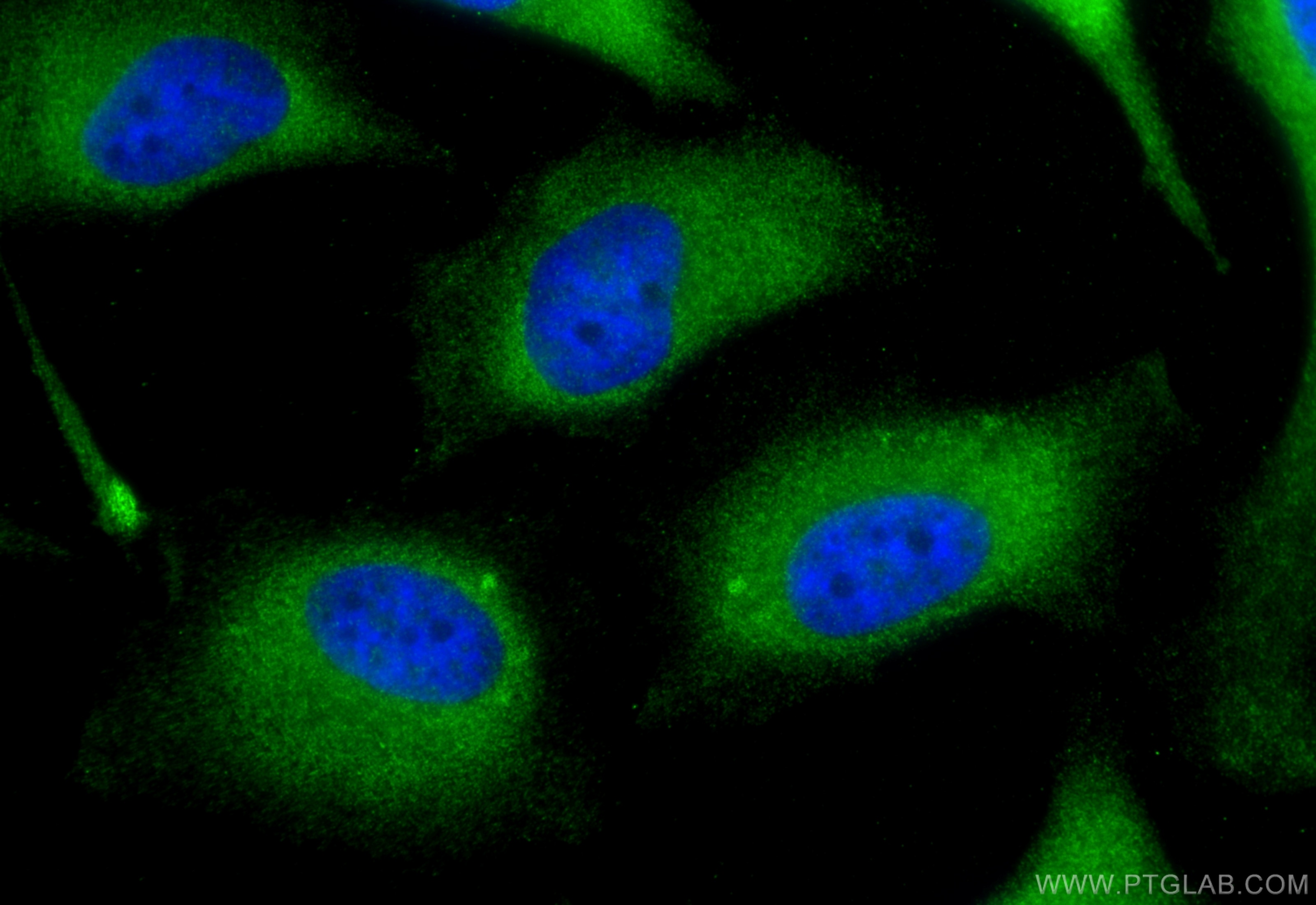Tested Applications
| Positive WB detected in | HeLa cells, HEK-293 cells, mouse colon tissue, NCI-H1299 cells, rat brain tissue, rat kidney tissue, rat liver tissue, HepG2 cells, LNCaP cells, MCF-7 cells, SKOV-3 cells, THP-1 cells, mouse kidney tissue |
| Positive IP detected in | mouse kidney tissue |
| Positive IHC detected in | human pancreas cancer tissue, human colon tissue, mouse kidney tissue Note: suggested antigen retrieval with TE buffer pH 9.0; (*) Alternatively, antigen retrieval may be performed with citrate buffer pH 6.0 |
| Positive IF/ICC detected in | HeLa cells |
Recommended dilution
| Application | Dilution |
|---|---|
| Western Blot (WB) | WB : 1:5000-1:50000 |
| Immunoprecipitation (IP) | IP : 0.5-4.0 ug for 1.0-3.0 mg of total protein lysate |
| Immunohistochemistry (IHC) | IHC : 1:100-1:400 |
| Immunofluorescence (IF)/ICC | IF/ICC : 1:50-1:500 |
| It is recommended that this reagent should be titrated in each testing system to obtain optimal results. | |
| Sample-dependent, Check data in validation data gallery. | |
Published Applications
| KD/KO | See 4 publications below |
| WB | See 114 publications below |
| IHC | See 24 publications below |
| IF | See 19 publications below |
Product Information
14787-1-AP targets CBS in WB, IHC, IF/ICC, IP, ELISA applications and shows reactivity with human, mouse, rat samples.
| Tested Reactivity | human, mouse, rat |
| Cited Reactivity | human, mouse, rat, pig, rabbit, canine |
| Host / Isotype | Rabbit / IgG |
| Class | Polyclonal |
| Type | Antibody |
| Immunogen |
CatNo: Ag6437 Product name: Recombinant human CBS protein Source: e coli.-derived, PGEX-4T Tag: GST Domain: 206-551 aa of BC000440 Sequence: VAWRLKNEIPNSHILDQYRNASNPLAHYDTTADEILQQCDGKLDMLVASVGTGGTITGIARKLKEKCPGCRIIGVDPEGSILAEPEELNQTEQTTYEVEGIGYDFIPTVLDRTVVDKWFKSNDEEAFTFARMLIAQEGLLCGGSAGSTVAVAVKAAQELQEGQRCVVILPDSVRNYMTKFLSDRWMLQKGFLKEEDLTEKKPWWWHLRVQELGLSAPLTVLPTITCGHTIEILREKGFDQAPVVDEAGVILGMVTLGNMLSSLLAGKVQPSDQVGKVIYKQFKQIRLTDTLGRLSHILEMDHFALVVHEQIQYHSTGKSSQRQMVFGVVTAIDLLNFVAAQERDQK Predict reactive species |
| Full Name | cystathionine-beta-synthase |
| Calculated Molecular Weight | 61 kDa |
| Observed Molecular Weight | 61-63 kDa |
| GenBank Accession Number | BC000440 |
| Gene Symbol | CBS |
| Gene ID (NCBI) | 875 |
| RRID | AB_2070970 |
| Conjugate | Unconjugated |
| Form | Liquid |
| Purification Method | Antigen affinity purification |
| UNIPROT ID | P35520 |
| Storage Buffer | PBS with 0.02% sodium azide and 50% glycerol, pH 7.3. |
| Storage Conditions | Store at -20°C. Stable for one year after shipment. Aliquoting is unnecessary for -20oC storage. 20ul sizes contain 0.1% BSA. |
Background Information
The CBS gene encodes cystathionine beta-synthase, which catalyzes the first irreversible step of transsulfuration. The CBS enzyme is a homotetramer of 63-kD subunits and requires pyridoxal phosphate and heme for activity(PMID:11230183). CBS protein is localized in most areas of the brain, but predominantly in the cell bodies and neuronal processes of Purkinje cells and Ammon's horn neurons(PMID:12588964).
Protocols
| Product Specific Protocols | |
|---|---|
| IF protocol for CBS antibody 14787-1-AP | Download protocol |
| IHC protocol for CBS antibody 14787-1-AP | Download protocol |
| IP protocol for CBS antibody 14787-1-AP | Download protocol |
| WB protocol for CBS antibody 14787-1-AP | Download protocol |
| Standard Protocols | |
|---|---|
| Click here to view our Standard Protocols |
Publications
| Species | Application | Title |
|---|---|---|
Mol Cell mTORC1 stimulates cell growth through SAM synthesis and m6A mRNA-dependent control of protein synthesis. | ||
Mol Cell Spatiotemporal Proteomic Analysis of Stress Granule Disassembly Using APEX Reveals Regulation by SUMOylation and Links to ALS Pathogenesis. | ||
Nat Commun Remote ischemic conditioning counteracts the intestinal damage of necrotizing enterocolitis by improving intestinal microcirculation. | ||
Redox Biol Endogenous hydrogen sulfide accelerated trauma-induced heterotopic ossification through the Ca2+/ERK pathway-enhanced aberrant osteogenic activity | ||
Cancer Res PRMT1 sustains de novo fatty acid synthesis by methylating PHGDH to drive chemoresistance in triple-negative breast cancer | ||
Redox Biol Endogenous H2S targets mitochondria to promote continual phagocytosis of erythrocytes by microglia after intracerebral hemorrhage |

